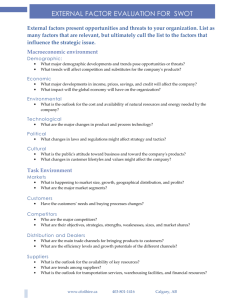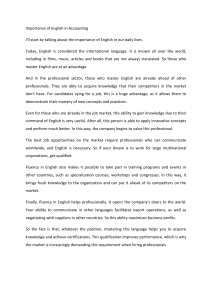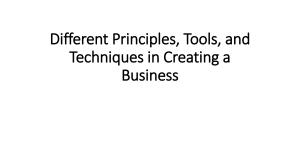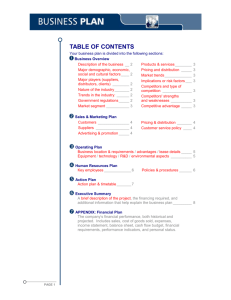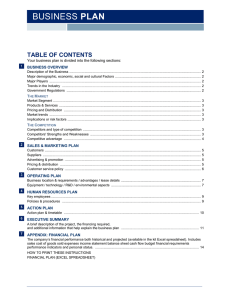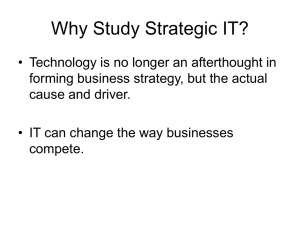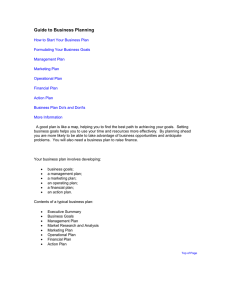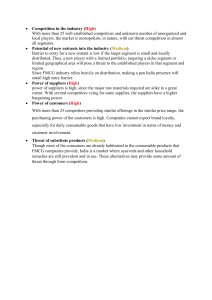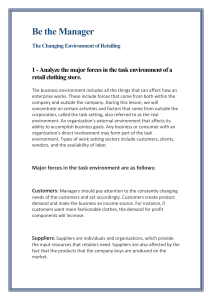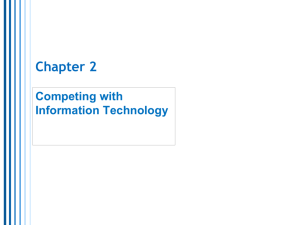Environmental Scans - Public Schools of Robeson County
advertisement
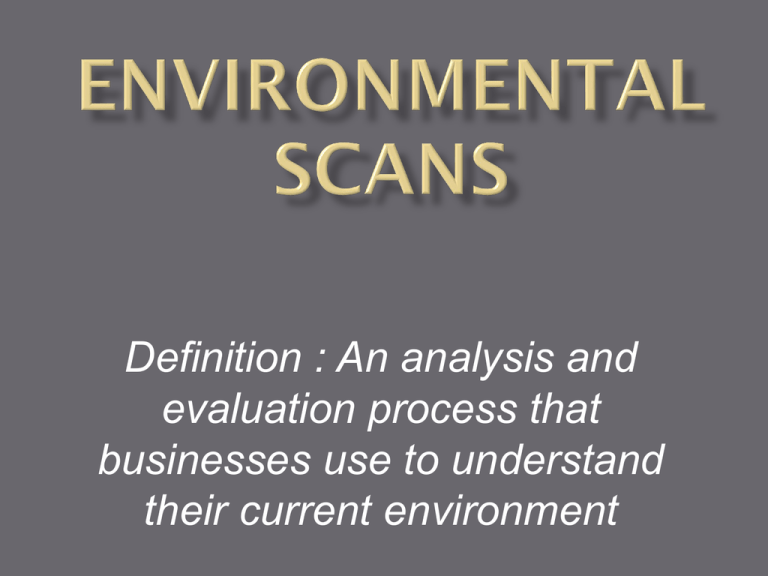
Definition : An analysis and evaluation process that businesses use to understand their current environment The global environment refers to the macro-level which comprises industries, markets, companies, clients and competitors in general. On the micro-level are other factors such as suppliers, vendors and local customers and competitors are analyzed within the industry analysis. What is the current external environment (data and situations) of a business? What are the implications of these issues for business? What key forces in the business’s environment need to be addressed and which ones are less important? What trends and issues are affecting business? What is the impact of the trends on business? How might the environment change in the future? How will businesses’ decisions and actions influence this environment? How do customers, interest groups, community organizations, agencies or governments impact the environment? Are there any events on the horizon to be dealt with? What factors are within a business’s control and which are beyond its influence? What could a business do to affect the impact of these factors? Political factors Taxation Policy • Trade regulations • Governmental stability • Unemployment Policy etc. • Economical factors • • • • • Inflation rate Growth in spending power Rate of people in a pensionable age Recession or Boom Customer liquidations Socio-cultural age distribution. • education levels. • income level. • consumerism. • diet & nutrition. • population growth • life expectancies • Religion • Technological factors • • • Internet E-commerce Social Media Environmental factors Laws on Waste disposal Energy consumption Pollution monitoring etc. Legal factors Unemployment law Health and safety Product safety Advertising regulations Product labeling labor laws etc. Ecology affects customer's buying habits. affect the firm production process. Potential supplies labor supply quantity of labor available. quality of labor available. material suppliers. delivery delay. level of competition to suppliers, service provider. special requirement. Examples: Interviews with business officers, owners, managers Comments made by business officers, owners, managers National and local newspapers Trade publications Business magazines Websites: Hoover’s, Morningstar, brokerage firms, credible financial sites Personal Observations Research findings (county demographic & census information and state records.) Input from professional organizations Aids in anticipating changes Answers the question, “Where are we now?” Provides a starting point for businesses’ planning of goals, objectives, and actions that answer the question, “Where do we want to be?” Search for local demographic and census information to find out the general age, income, educational and employment factors for the area. Check out various resources for any new building or economics changes coming. This can be personal interviews or news searches. Have there been any new votes or laws passed that will change business in the area? Look for trends in population such as aging or new growing families for the area Create a list of potential / available customer groups. (both major and minor.) Create a list of direct competitors (both major and minor.) Next create a list of businesses competing for the same customer dollars but not necessarily the same business.
